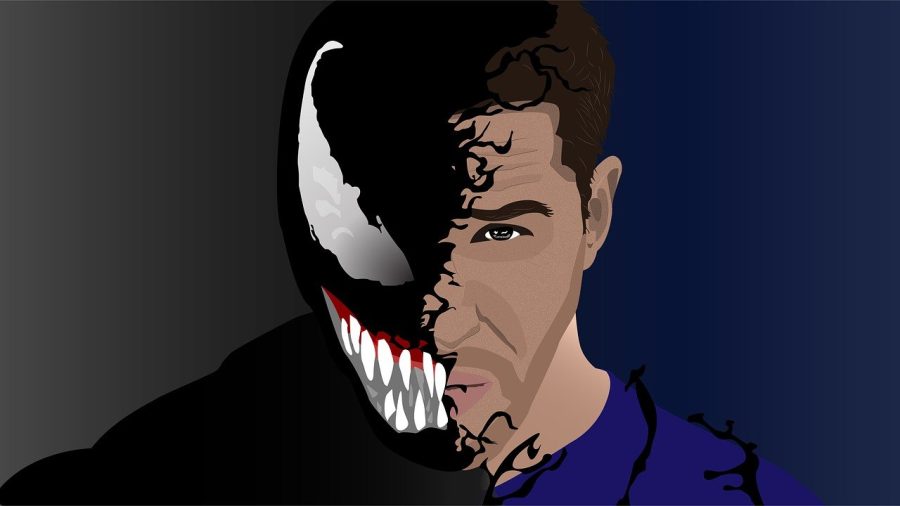Chaos ensues in “Venom: Let There Be Carnage”
Director Andy Serkis delivers a haunting, comedic masterpiece
“Venom: Let There Be Carnage,” the second installment in the Marvel Universe series, came to theaters on Oct. 1. (CC0 for Public Domain Dedication)
October 2, 2021
A slow smile stretched across Cletus Kasady’s face as his eyes peered into Eddie Brock’s soul from behind wrought-iron bars. He was the perfectly disturbed image of a serial killer, but Brock was not afraid. After all, this was a comedy-action antihero movie turned complex romance. He had nothing to fear from Woody Harrelson’s psychotic character, or so he thought.
Directed by Andy Serkis, “Venom: Let There Be Carnage” came to theaters on Oct. 1, delighting viewers with the second installment of the Marvel Cinematic Universe series. The origin story released in 2018 followed journalist-turned-vigilante Eddie Brock, played by Tom Hardy, and his symbiote companion Venom as they fought Carlton Drake and his corrupt Life Foundation. At the end of the movie, Brock was attempting to reignite his career through an exclusive interview with a notorious serial killer on death row.
The sequel does not pick up where its predecessor left off. Instead, it takes us back in time to the St. Estes Home for Unwanted Children, where Kasady and his lover Frances Barrison, played by Naomie Harris, got engaged before Barrison was taken away to a new prison on account of her growing mutation. Interestingly, Barrison’s mutation was the one thing that could harm a symbiote: piercing sonic blasts.
In the present, Brock interviewed Kasady, delving into his psyche with the help of Venom’s genius. Kasady confided in Brock, telling him about the people he had killed and his traumatizing childhood. After a series of vicious events, Kasady acquired a red-blooded symbiote powerful enough to free him from prison and send him on a rampage through San Francisco.
This was not the only conflict in the movie, though. Despite Brock and Venom coexisting in Brock’s body, the pair had different ambitions, with Brock desiring a successful career and Venom wanting to, well, eat bad people and get Brock to “pull up [his] big boy pants.” Their disputes over a flatscreen television, chicken, and chocolate expanded on the intrapersonal problems established in the first film.
While it may sound ridiculous and was occasionally over-the-top, Hardy’s dynamic relationship with himself was the comedic backbone of the movie, breaking up intense action scenes and bone-chilling interactions with Harrelson. That is not to say Harrelson and Marris did not have their fun playing a Joker and Harley Quinn duo that was as giddy and lovesick as they were lethal. Harrelson’s experience in the 1994 film “Natural Born Killers” certainly lent its hand to creating his creepy presence.
Nearly every sequel falls short of the expectations set by its superhero origin story because it lacks the enchantment of the first heroic triumph of the underdog; however, by centering so much of the film around Kasady’s villain story, director Andy Serkis created a similar build-up of cinematic weight as the audience saw Brock face a villain they now understood intimately.
Funny until the last minute, “Venom: Let There Be Carnage” feeds all movie-genre cravings and is a must-watch for Marvel fans who should be sure to stick around for the shocking and exciting end credits. Hopefully, there will be further sightings of the “boy and his amoeba” in the MCU’s Phase Four.



